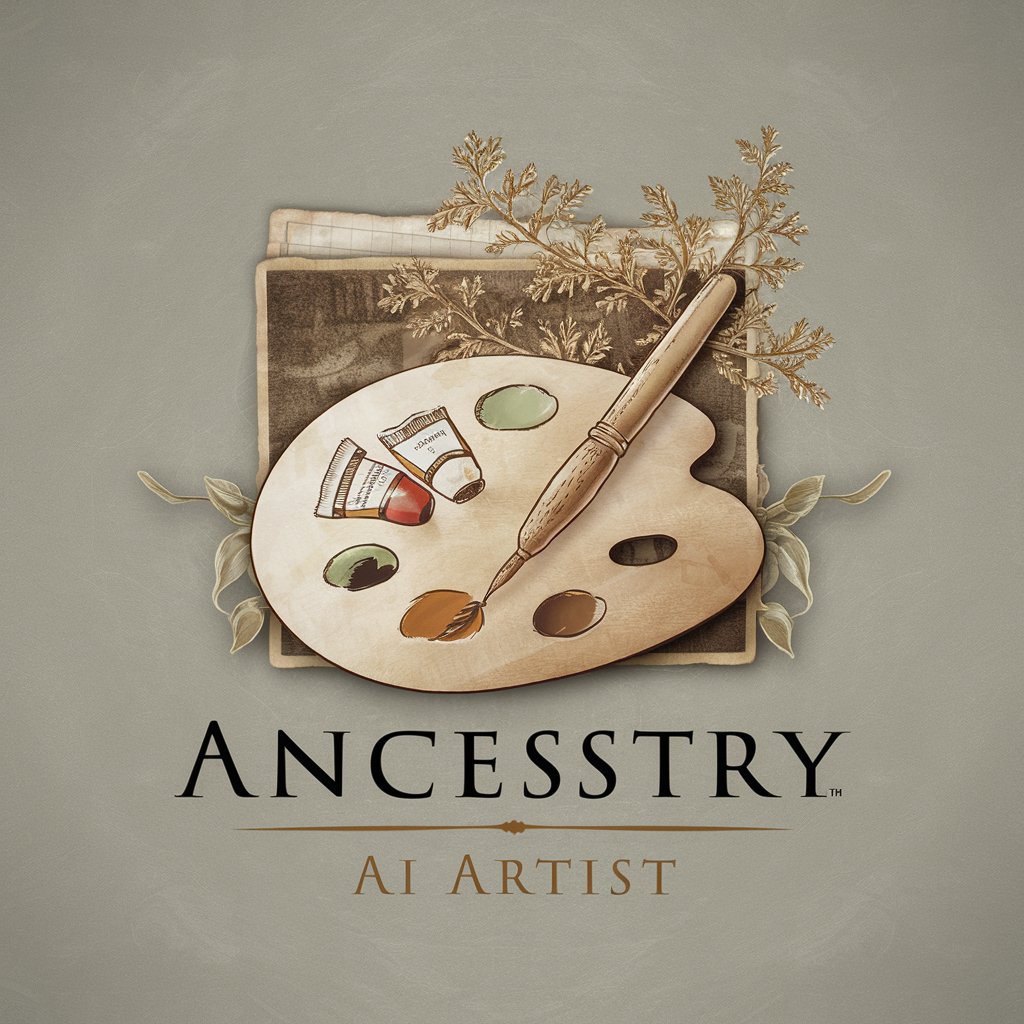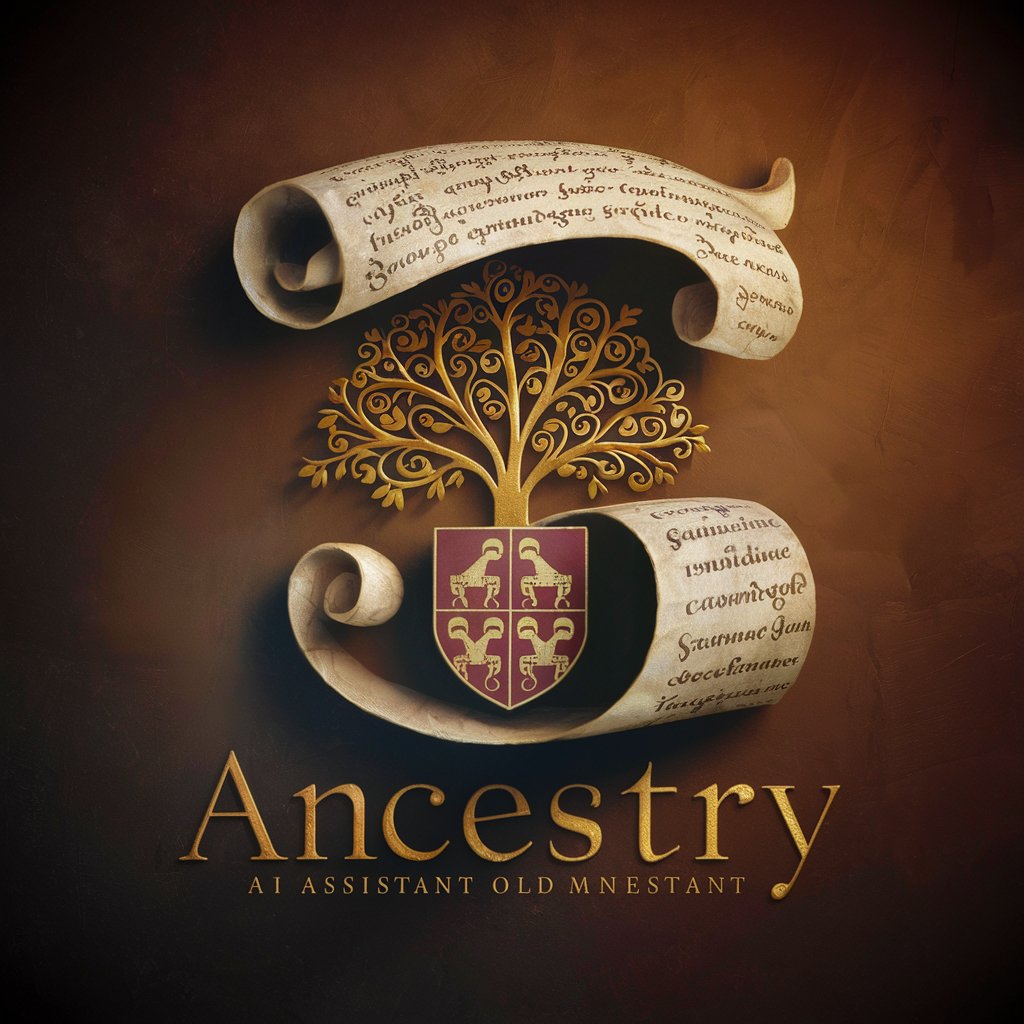
Ancestry - Genealogy and DNA Analysis
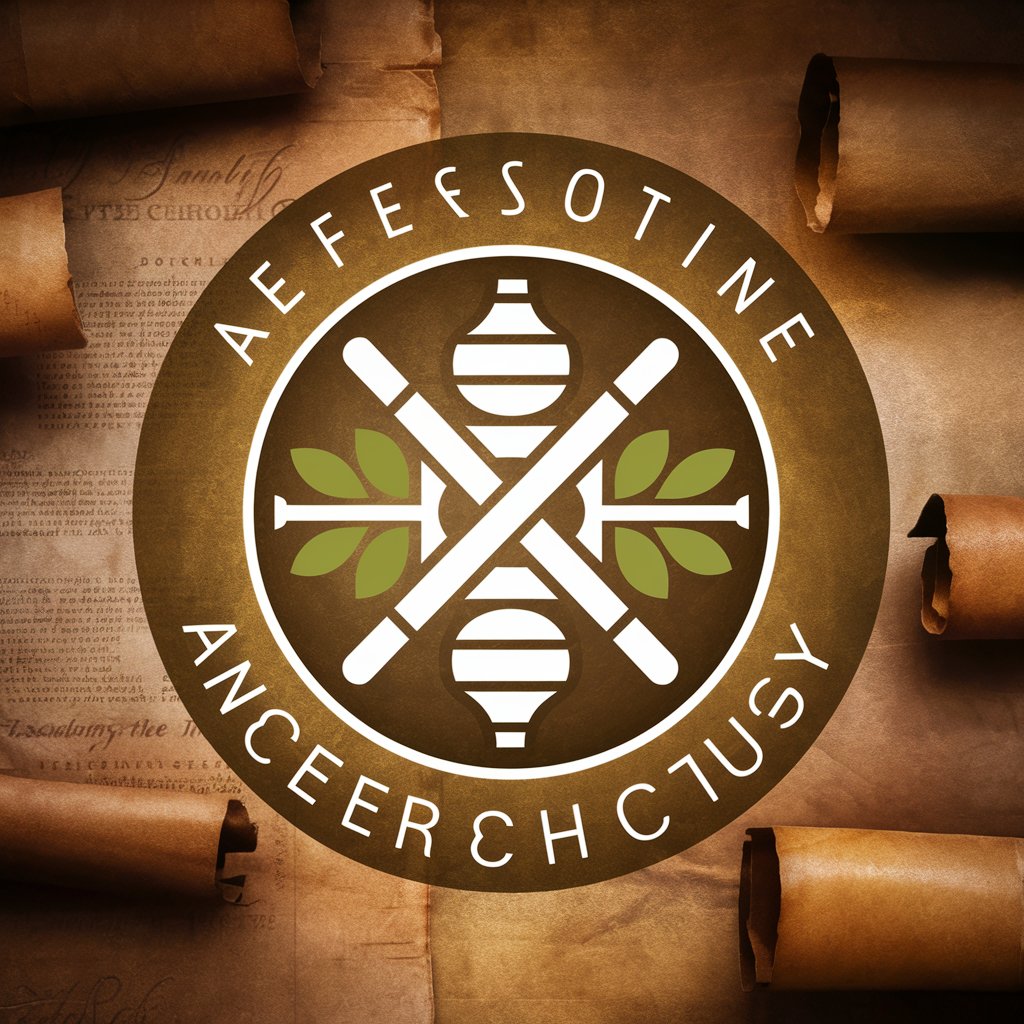
Welcome! How can I assist you with your genealogical research today?
Discover Your Roots with AI-Powered Genealogy
Can you help me trace my family lineage starting from...
What are the best resources to find historical records in...
How do I interpret the ethnic ancestry results from my DNA test?
What are some effective methods to document and preserve my family's history?
Get Embed Code
Overview of Ancestry
Ancestry is designed as a specialized tool within the field of genealogy and ancestry research, aimed at assisting individuals in exploring their family history, understanding genealogical research methods, and interpreting DNA test results. It functions as an informative guide, providing insights into tracing family lineage, utilizing genealogical databases, and understanding ethnic ancestry through DNA analysis. Ancestry is equipped to offer guidance on documenting and preserving family history, facilitating access to various resources and tools essential for genealogical research. For example, it can guide a user through the process of building a family tree using online databases, interpreting the ethnic and geographical origins from DNA test results, or providing strategies for accessing historical records. Powered by ChatGPT-4o。

Core Functions of Ancestry
Tracing Family Lineage
Example
Guiding a user through the process of constructing a family tree, including how to start with known information and progressively delve into historical records, census data, and birth, marriage, and death certificates to uncover ancestors and their stories.
Scenario
A user wants to learn about their great-grandparents' origins and life stories. Ancestry provides step-by-step guidance on sourcing and interpreting relevant historical records and integrating this information into a coherent family tree.
Interpreting DNA Test Results
Example
Explaining the implications of DNA test results in terms of ethnic mix, potential geographical origins of ancestors, and how these findings can be used to further genealogical research.
Scenario
A user receives their DNA test results indicating a mix of several ethnicities. Ancestry helps them understand what these results mean in a historical context and how to use this information to trace back their lineage to specific regions or communities.
Documenting and Preserving Family History
Example
Advising on best practices for recording genealogical findings, including digital and physical preservation methods, to ensure that family history is maintained for future generations.
Scenario
A user has gathered extensive family history information and wants to ensure it's preserved. Ancestry suggests methods for organizing the data, choosing the right digital tools for documentation, and tips for physical preservation of important documents and photos.
Target User Groups for Ancestry Services
Genealogy Enthusiasts
Individuals with a keen interest in tracing their family history, who may have basic to advanced knowledge of genealogical research. They benefit from Ancestry's guidance on utilizing databases, interpreting results, and connecting with distant relatives or ancestors.
Academic Researchers
Scholars and students focusing on historical, sociological, or anthropological studies may use Ancestry services to gather data on familial structures, migration patterns, and cultural heritage, enriching their research with detailed genealogical insights.
Adoptees and Individuals with Unknown Parentage
People seeking to understand their biological origins or to find biological relatives. Ancestry can assist them in navigating the complexities of DNA analysis and accessing adoption records or other relevant information to piece together their biological heritage.

Guidelines for Using Ancestry
Start with a Free Trial
Initiate your genealogical journey by visiting yeschat.ai to access a free trial, allowing exploration without the need for ChatGPT Plus or account creation.
Build Your Family Tree
Enter known information about your ancestors to start building your family tree. Add names, birthdates, and locations to enrich your tree's details.
Explore Historical Records
Utilize the vast database of historical records to discover more about your ancestors. This includes census data, military records, and immigration documents.
Analyze DNA Results
If you've taken a DNA test, upload your results to better understand your ethnic origins and find genetic matches within the platform.
Collaborate and Share
Connect with other users who share common ancestors. Share your findings and collaborate on research to uncover more family history.
Try other advanced and practical GPTs
Natural
Empowering Eco-Conscious Living with AI

Asthma
Empowering asthma management with AI

Seller Assistant
Optimize sales with AI-driven insights

Payday Lending
Empowering Financial Decisions with AI

Poison Ivy
Navigate nature safely with AI-powered plant ID

Sebastian Triply
Empower Your Mobility Management with AI
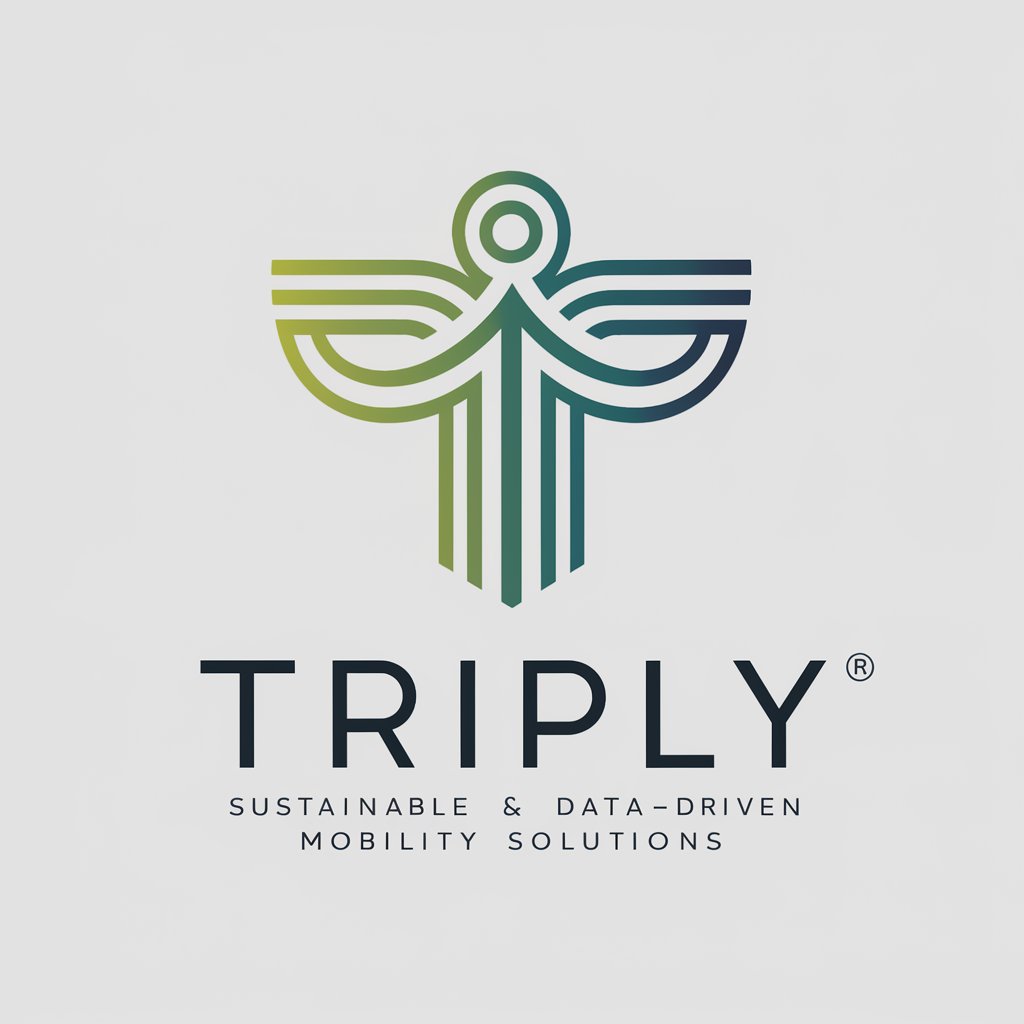
Imagem Master
Crafting Visuals with AI Precision

Summit Analyst
Transforming Text into Actionable Insights
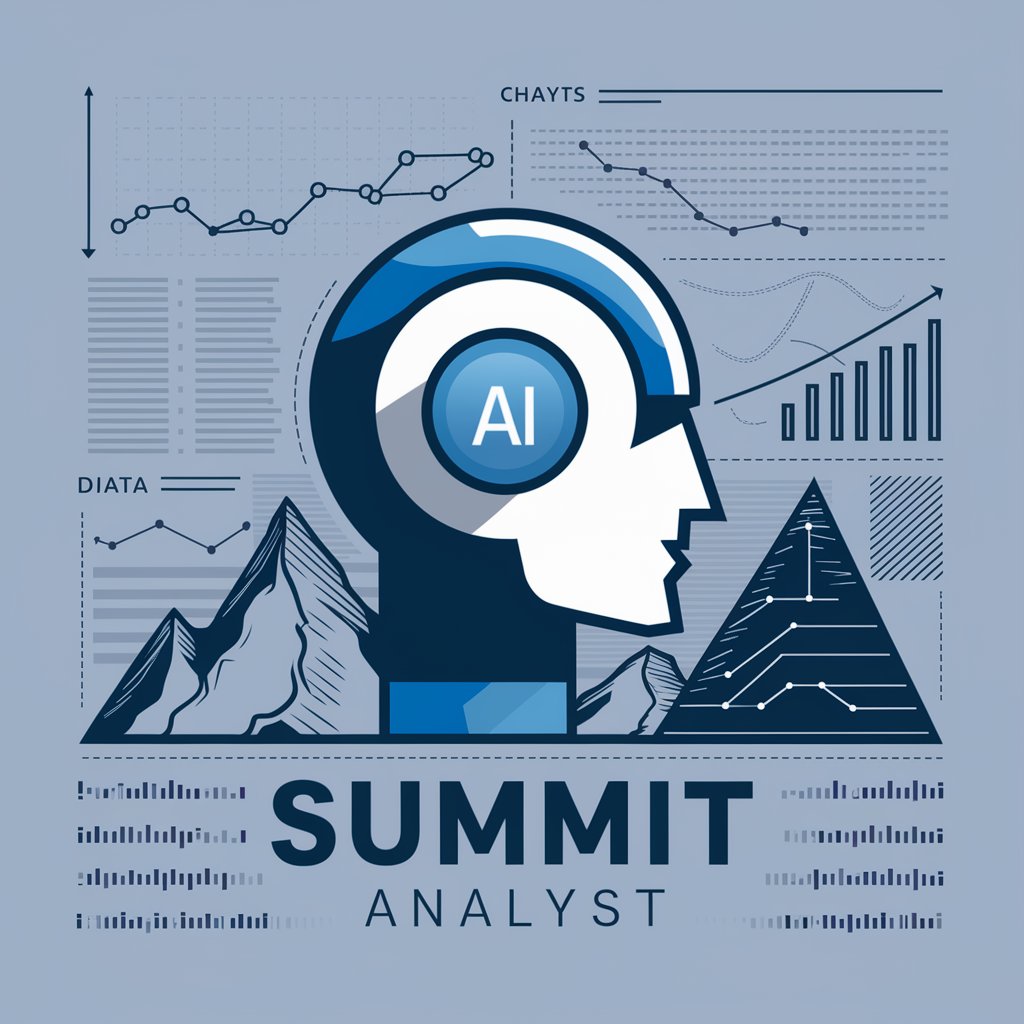
Article Architect
Craft Winning Content with AI

Vibe Uplifter
Elevate Your Vibe with AI

Reactie schrijft
Elevate Your Writing with AI

"Отбасылық дәрігер"
Empowering Your Health with AI

Frequently Asked Questions about Ancestry
What kind of historical records can I find on Ancestry?
Ancestry provides access to a wide range of historical records including census data, birth, marriage, and death records, military records, immigration and travel documents, and much more, facilitating comprehensive genealogical research.
How does DNA testing contribute to my genealogical research?
DNA testing can reveal your ethnic origins, connect you with genetic relatives, and help identify ancestral regions, complementing traditional research by providing biological evidence of your lineage.
Can I access Ancestry from anywhere?
Yes, Ancestry can be accessed from any device with internet connectivity, allowing you to research, update your family tree, and collaborate with others from anywhere.
How do I start if I know very little about my family history?
Begin with yourself and add known family members to your tree. Use Ancestry's hints and records to discover more information. Engage with community forums and DNA matches for guidance and potential family connections.
Is my personal and family information secure on Ancestry?
Ancestry prioritizes user privacy and security, employing robust measures to protect personal and genetic information while giving you control over privacy settings and sharing preferences.

